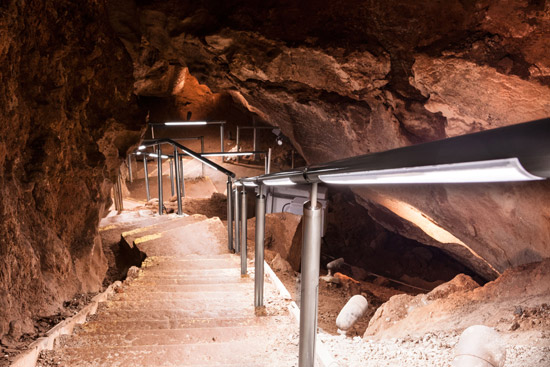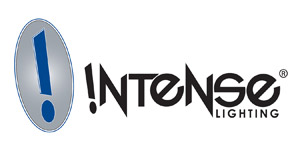Satisfying New Model Codes for Illuminating Steps, Ramps, and Paths of Egress
Eliminate Potential Glare
The illuminated handrail offers an interesting solution to the potential glare that can be an issue when specifying bollards or pole lights, especially on stairs or areas with dramatically changing elevations. The handrail is designed, so that it will not emit light above the horizontal plane, but many bollards are designed to offer the same cutoff angle. The difference between the glare protection offered by a bollard and an illuminated handrail results from the ability of the handrail to travel along the stairs, instead of being positioned, like a bollard, where it will be above some points on the stairway and below others. The illuminated handrail matches the changes in elevation step by step. This improved fit can significantly reduce the risk that an occupant would ever find themselves underneath the illuminated handrail in a way that would expose them to a direct view of the light source and potentially cause them discomfort.
An Energy-Efficient Exterior Lighting Solution
The illuminated handrail packages the most energy-efficient light source, the LED, in a way that minimizes the excess distance between the walking surface and the light source, because the handrail is essentially an important element of the path of egress itself. This combination of an efficient light source and unparalleled proximity to the path enables the illuminated handrail to provide an illumination solution that is as efficient, if not more efficient, than other pole light and bollard solutions considered for the same space.
Using Illuminated Handrails Beyond Paths of Egress
Illuminated handrails also offer a unique fit for healthcare settings and multi-level atriums. In healthcare settings, handrails are used commonly throughout the facility, because of the often-compromised mobility of the patients. Using illuminated handrails in corridors with patient rooms adequately illuminates the walking surface, without filling the space with excess light that may seep into patient rooms and disturb their sleep. In multi-level atriums, the illuminated guardrails provide the desired light levels around the perimeter of the atrium and they are easy for maintenance personnel to access and maintain.
 |
Alabaster Caverns State Park: Freedom, Oklahoma Photo courtesy of Intense Lighting |
When specifying the right exterior light fixture for a step, ramp, or path of egress, the ideal level of illumination may be the first design objective that should be identified. Depending upon the applicable building codes, and the liability concerns of the client, exterior fixtures may be tasked with illuminating the walking surface in a minimum 10fc. Luckily, new innovations in exterior fixtures, such as illuminated handrails will enable design teams to provide the right amount of light, in the right location, at the right time, and within the allowable energy footprint.
 |
Intense Lighting, (Anaheim, CA) is recognized as a solutions-based manufacturer of award-winning, sustainable lighting products. Our innovative and efficient luminaires offer a variety of specification grade lighting solutions for commercial, hospitality, retail and residential markets. It’s our mission to deliver quality products, quick shipping lead times, competitive pricing and excellent service. http://www.intenselighting.com/ |








